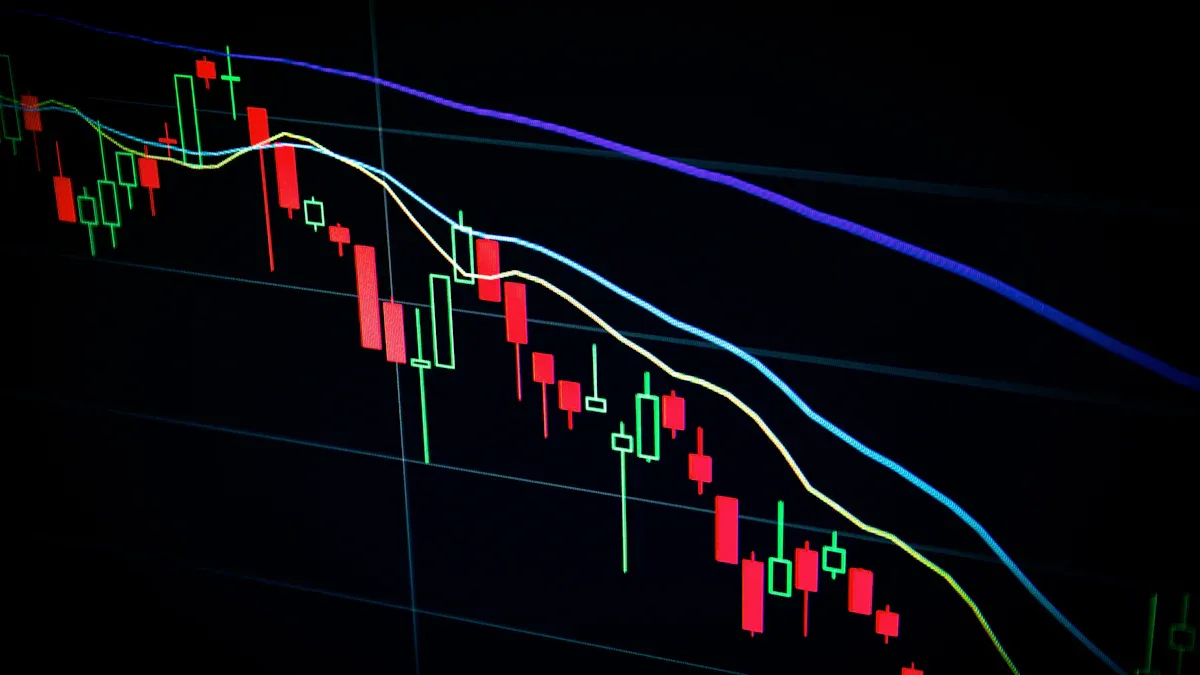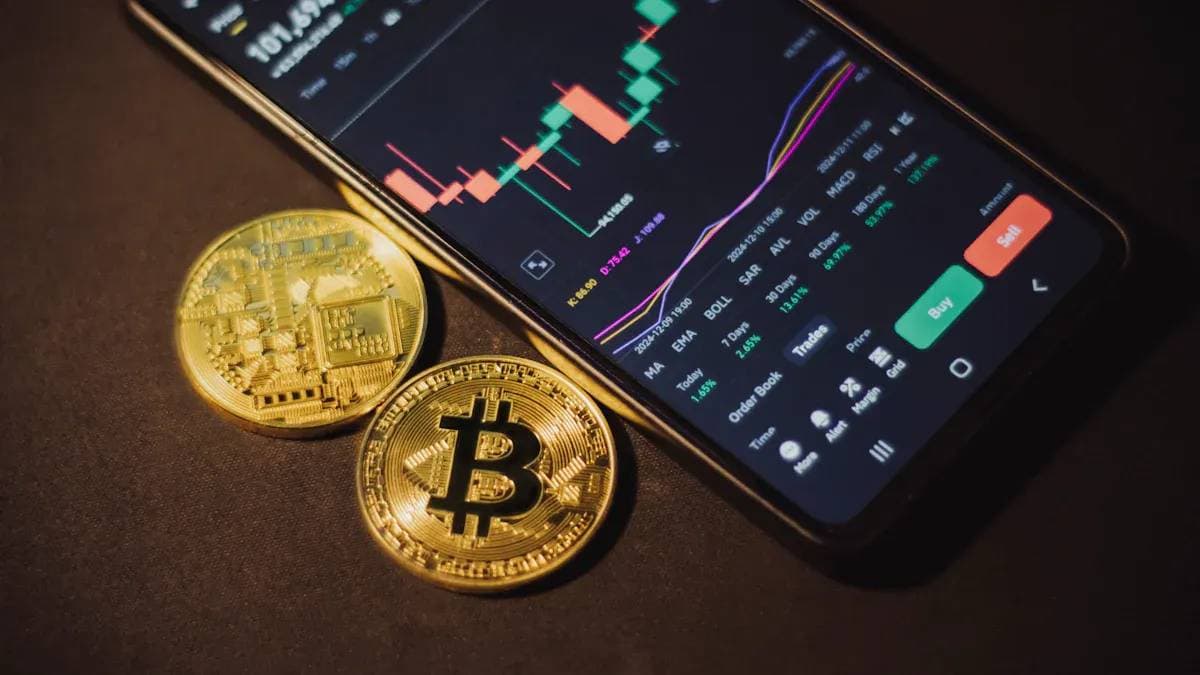- EasyCard
- Trade
- Help
- Announcement
- Academy
- SWIFT Code
- Iban Number
- Referral
- Customer Service
- Blog
- Creator
Can Scalping Really Make Money? Why Do Some People Become Experts While Others Go Broke and Leave the Market?

Image Source: pexels
You may wonder whether scalping trading can truly generate profits. This high-frequency, small-profit strategy carries significant risks. Success demands strict risk control, robust money management, and strong psychological resilience. The table below outlines common risk factors:
| Risk Factor | Description |
|---|---|
| High Stress | The fast-paced nature of scalping can lead to significant stress and mental strain. |
| Time-Intensive | Requires constant chart monitoring and rapid trade execution, demanding long periods of focus. |
| Trading Costs | Frequent trading incurs higher commission costs, significantly eroding profits. |
| Overtrading Risk | Constantly seeking opportunities may lead to overtrading and increased losses. |
| Sensitivity to Market Noise | Short-term price movements are often driven by market noise, leading to false signals. |
| Psychological Challenges | Rapid decision-making can result in emotional trading and deviation from strategy. |
You must carefully assess whether this trading style suits you.
Key Highlights
- Scalping relies on rapid trades and small profits, ideal for those with quick reactions and strict discipline.
- Successful scalpers need robust risk management, limiting each trade’s risk to 1-2% of total capital.
- Psychological resilience is critical; you must manage emotions to avoid impulsive decisions driven by greed or fear.
- Frequent trading increases transaction costs, so monitor fees to protect profits.
- Beginners should practice on demo accounts, develop a trading plan, avoid common mistakes, and hone skills.
Scalping Trading Principles
Definition and Characteristics
In financial markets, you’ll encounter various trading strategies, with scalping focusing on frequent, short-term trades. The table below summarizes its key characteristics:
| Characteristic | Description |
|---|---|
| Definition | Scalping involves opening and closing positions in very short timeframes. |
| Trading Style | Focuses on numerous orders, capitalizing on small price movements with brief holding periods. |
| Objective | Aims to buy low and sell high (or vice versa) quickly for small profits. |
High Frequency and Fast Execution
Scalping’s hallmark is its high frequency and rapid execution.
- Scalpers often execute hundreds of trades daily.
- Trades typically last seconds to minutes, rarely exceeding an hour.
- You target small, consistent profits that accumulate over time.
- High-frequency trading enables quick order execution, enhancing market efficiency but increasing costs and competition.
- You need quick decision-making and sharp market trend awareness.
Advantages and Disadvantages
Scalping offers unique benefits but also significant drawbacks.
| Advantage | Description |
|---|---|
| Trading Frequency | Allows frequent trades without waiting for new trends. |
| Small Price Movement Gains | Profits from minimal price fluctuations with rapid trades. |
| Quick Psychological Feedback | Immediate trade outcomes reduce waiting anxiety. |
| High Potential Returns | Offers high returns with a high proportion of winning trades. |
| Low Entry Barrier | Tight stop-losses require minimal capital. |
However, consider these disadvantages:
- Frequent trading increases costs, eroding profits.
- Market noise can generate false signals.
- Constant monitoring and quick decisions create significant stress.
- Scalping demands substantial time and energy, leading to fatigue.
- Small profit targets can lead to unfavorable risk-reward ratios, potentially resulting in negative expectancy.
Can Scalping Trading Be Profitable?
Suitable Candidates
Who thrives in scalping? This strategy demands high personal discipline. You need discipline and self-control to stay calm amid market volatility. Patience and a long-term perspective are crucial for repetitive trades. Adaptability and learning ability allow quick strategy adjustments. Risk management awareness protects your capital, and rational decision-making prevents emotional errors.
Successful scalpers control emotions, making rational decisions under pressure, ensuring stability in volatile markets.
If you possess these traits, scalping may suit you:
- Discipline and self-control
- Patience and long-term focus
- Adaptability and learning
- Risk management
- Objective, rational decision-making
- Emotional intelligence
In the U.S. market, professional traders emphasize these qualities. Continuous practice and reflection can enhance these skills.
Profit Factors
To consistently profit in scalping, master key elements. You need clear entry and exit strategies. Enter trades at the onset of price movements and exit as momentum fades. Timing is critical for maximizing gains. The table below outlines core profit factors:
| Aspect | Description |
|---|---|
| Entry Strategy | Enter trades at the start of small price movements based on price action signals. |
| Exit Strategy | Close positions quickly as price momentum weakens to lock in small profits. |
| Market Timing | Choose optimal entry and exit points to maximize gains and minimize losses. |
| Trade Execution | Execute trades swiftly based on predefined strategies. |
Strong psychological resilience is essential. Scalping requires calm under pressure and rapid decisions without emotional interference. Many experts achieve consistent profits through strict stop-losses and risk management. For example, in the U.S. market, traders executing hundreds of daily trades rely on discipline and strategy for steady gains.
Risk Management
Risk management determines success or failure in scalping. Set tight stop-loss orders to cap losses per trade. Controlling position sizes reduces exposure to market swings.
Risk management techniques minimize losses and boost success rates. Experts typically limit each trade’s risk to 1-2% of capital.
The table below shows common risk management metrics:
| Risk Management Metric | Value |
|---|---|
| Max Risk per Trade | 1-2% |
| Standard Stop-Loss | 5-10 pips |
| Trailing Stop Trigger | 5+ pips |
| Position Size Range | 0.5-2 lots |
| Required Account Balance | $10,000+ |
Use the Average True Range (ATR) to adjust stop-losses based on market volatility. Apply trailing stops after securing 5+ pips to protect profits. Adhering to these methods significantly improves success rates. Risk management remains the cornerstone of scalping.
Causes of Blow-Ups

Image Source: unsplash
Major Risks
Scalping involves significant risks, particularly from high leverage and frequent trading. High leverage amplifies both profits and losses, potentially wiping out accounts quickly without strict risk management. Margin calls are a risk during volatile markets. Frequent trading increases emotional decisions, leading to impulsive actions.
Beware of overtrading and poor risk management, which expose your account to high risks.
Common high-leverage scalping risks include:
- Amplified profits and losses
- Rapid account depletion
- Margin call risks
- Increased emotional trading
- Overtrading and poor risk control
Frequent trading heightens blow-up risks. Without proper money management, high trade volumes can lead to liquidation, especially with oversized positions or insufficient capital.
Reasons for Failure
Failure in scalping often stems from inadequate market analysis and risk management. Many beginners trade based on luck, chasing quick profits. Greed leads to poor decisions, and insufficient education results in errors. Lack of focus and emotional control triggers impulsive trading. Attempting to recover losses quickly often worsens outcomes. Inadequate capital, unrealistic expectations, and poor signal recognition increase failure risks.
Without proper risk management and education, you’re likely to lose before realizing the importance of learning.
Common beginner failure reasons:
- Trading for luck, expecting quick gains
- Greed-driven decisions
- Lack of education and guidance
- Poor focus and emotional control
- Chasing losses, leading to bigger losses
- Insufficient capital and unrealistic expectations
- Inadequate skills for signal identification
- Inability to handle uncertainty
- Poor risk management
Without preparation, you may make impulsive decisions based on emotions rather than analysis. Ignoring market volatility and liquidity conditions can lead to higher losses or missed opportunities.
Psychological Stress
Scalping generates significant psychological stress. High trade volumes demand constant focus, and missing opportunities can be costly. Without a clear strategy, emotional decisions lead to impulsive trades. Greed may cause you to hold positions too long, while fear of losses can lead to premature exits. Overcome these by calculating risks and sticking to your plan.
The table below shows emotional stress impacts on trading decisions:
| Physical Impact | Psychological Impact |
|---|---|
| Elevated Heart Rate | Decision Paralysis |
| Rapid Breathing | Information Overload |
| Sweating | Emotional Swings |
| Trembling Hands | Mental Confusion |
| Fatigue | Lack of Focus |
Fear can cause missed opportunities, greed increases risk through larger positions, anger leads to revenge trading, and anxiety prompts early exits. Mitigate these with predefined entry points, position sizing rules, mandatory cool-off periods, and systematic exits.
Studies show traders with documented plans experience 65% less anxiety during volatility. Sticking to a plan and focusing on tasks reduces stress and improves performance.
Expert Insights

Image Source: unsplash
Trading Habits
To become a scalping expert, develop strong daily habits. Successful traders exercise regularly to maintain mental sharpness. Mindfulness practices enhance clarity, helping you stay calm during volatility. A balanced diet sustains energy and focus, while adequate sleep improves emotional control and cognition. During trading, take breaks and do light exercise to restore focus.
These habits enhance physical and mental performance, critical for high-pressure trading environments.
Improving Win Rates
Top scalpers achieve win rates up to 80%, with a risk-reward ratio of 1:0.5, compared to swing traders’ 35% win rate and 1:3 ratio. The table below compares:
| Trader Type | Win Rate | Risk-Reward Ratio |
|---|---|---|
| Scalper | 80% | 1:0.5 |
| Swing Trader | 35% | 1:3 |
To boost win rates, enforce strict stop-losses, react quickly to market changes, and maintain discipline. Experts prioritize trade quality over quantity.
System Optimization
Optimize your trading system by mastering scalping basics and backtesting strategies with historical data. Use indicators like moving averages, RSI, MACD, and Bollinger Bands to confirm signals. Set specific stop-loss levels and maintain a detailed trading log. Experts regularly review records to identify errors and improve. Schedule periodic reviews to assess risk management practices.
Adjust indicator parameters to adapt to varying market conditions, enhancing system flexibility and accuracy.
Beginner Pitfalls
Beginners often overtrade, racking up high fees. Ignoring transaction costs erodes profits. Lack of preparation is common; experts recommend developing a trading plan and practicing on demo accounts. Always use stop-losses and set realistic profit targets.
Seek experienced mentors for structured guidance to avoid common mistakes, saving time and capital.
When considering scalping, evaluate your readiness.
- Scalping relies on frequent trades to profit from small price movements.
- You need quick reactions, strict discipline, and robust risk management.
- Constant monitoring and leverage increase potential losses.
- If you have a full-time job, longer-term strategies may be more suitable.
- Assess your skills, psychological resilience, and capital before engaging, avoiding blind pursuit of high returns.
FAQ
How much starting capital is needed for scalping?
You typically need at least $10,000 USD to start scalping. This allows better risk diversification and safer money management.
More capital helps withstand market fluctuations.
Is scalping suitable for mainland Chinese investors?
You can engage in scalping via regulated international platforms. Mainland China has strict regulations, so ensure compliance and fund safety.
Can I use a licensed Hong Kong bank account for scalping?
Yes, a Hong Kong bank account facilitates fund transfers, enhancing liquidity and security for trading accounts.
Are scalping transaction fees high?
Scalping fees are higher due to frequent trading. Commissions and spreads accumulate, reducing profits.
| Trade Type | Average Fee (USD) |
|---|---|
| Scalping | $5-$10 |
| Swing Trading | $2-$5 |
What are the advantages of scalping in the U.S. market?
The U.S. market offers high liquidity and transparency. Volatility creates frequent trading opportunities for quick profits.
Understanding scalping’s high-frequency profit potential and stringent discipline equips you to weigh its rewards against risks, but high cross-border fees, currency volatility, and account setup complexities can curb your ability to seize short-term U.S. stock or forex opportunities, especially in volatile markets. Picture a platform with 0.5% remittance fees, same-day global transfers, and zero-fee contract limit orders, enabling seamless scalping via one account?
BiyaPay is tailored for high-frequency traders, offering instant fiat-to-digital conversions to act on market signals swiftly. With real-time exchange rate query, track USD trends and remit at optimal moments to cut costs. Covering most regions with instant arrivals, it powers rapid scalping in U.S. stocks, ETFs, or forex. Standout: trade U.S. and Hong Kong markets through a single account, leveraging zero-fee contract limit orders for RSI or Bollinger Band-based limit strategies.
Whether chasing high win rates or dodging blow-ups, BiyaPay fuels your edge. Sign up now, visit stocks for U.S. short-term prospects—quick setup unlocks cost-effective, disciplined trading. Join global traders and make scalping your wealth driver!
*This article is provided for general information purposes and does not constitute legal, tax or other professional advice from BiyaPay or its subsidiaries and its affiliates, and it is not intended as a substitute for obtaining advice from a financial advisor or any other professional.
We make no representations, warranties or warranties, express or implied, as to the accuracy, completeness or timeliness of the contents of this publication.




Contact Us
Company and Team
BiyaPay Products
Customer Services
BIYA GLOBAL LLC is a licensed entity registered with the U.S. Securities and Exchange Commission (SEC No.: 802-127417); a certified member of the Financial Industry Regulatory Authority (FINRA) (Central Registration Depository CRD No.: 325027); regulated by the Financial Industry Regulatory Authority (FINRA) and the U.S. Securities and Exchange Commission (SEC).
BIYA GLOBAL LLC is registered with the Financial Crimes Enforcement Network (FinCEN), an agency under the U.S. Department of the Treasury, as a Money Services Business (MSB), with registration number 31000218637349, and regulated by the Financial Crimes Enforcement Network (FinCEN).
BIYA GLOBAL LIMITED is a registered Financial Service Provider (FSP) in New Zealand, with registration number FSP1007221, and is also a registered member of the Financial Services Complaints Limited (FSCL), an independent dispute resolution scheme in New Zealand.


















